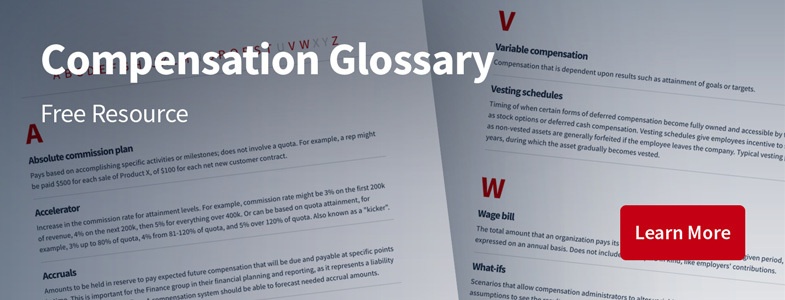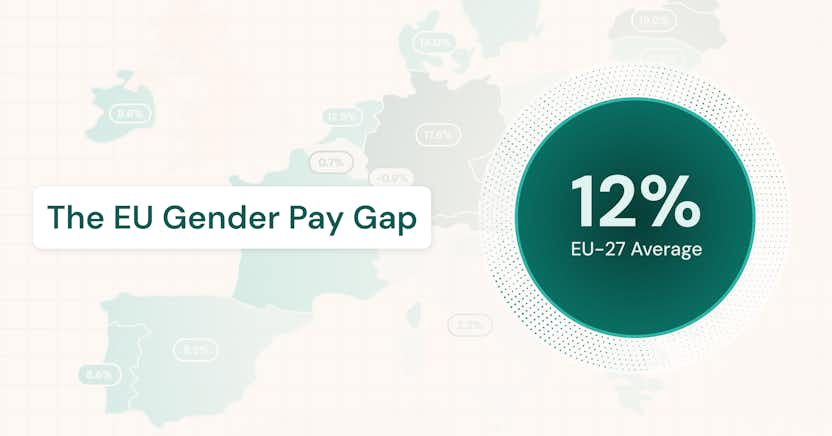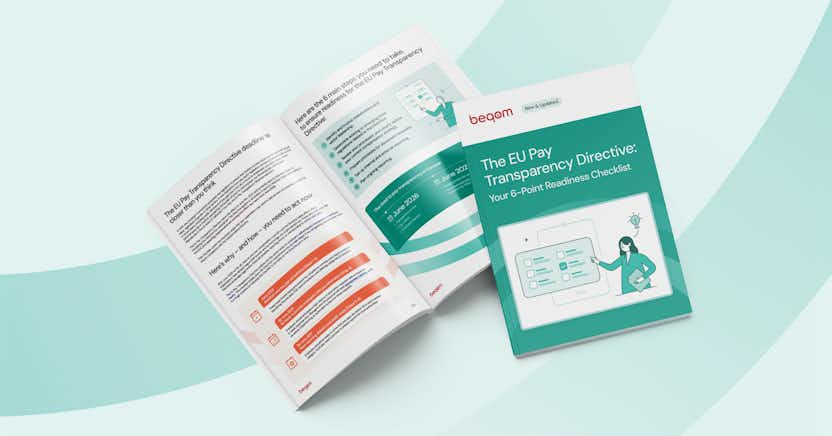Understanding Sales Incentive Compensation

Learn more about the following beqom products
Sales incentive compensation is the spark that drives sellers to sell, and so powers the revenue engine behind company success. It’s also the most complicated form of compensation, as it is calculated not just once a year but after every sales transaction for every sales rep, potentially yielding thousands of payments in a single day, with a multitude of rules that determine how much commission should be paid when and to whom.
HR software is not equipped to manage sales commissions, so sales organizations either struggle with spreadsheet-based approaches or employ dedicated sales compensation systems. Why bother? Because well-managed sales compensation can mean the difference between a productive, motivated salesforce and frustrated sales reps who are looking for another job.
Let’s look at what sales compensation involves, and what it takes to manage it efficiently, effectively, and at scale.
As we noted in the first article in our Understanding Compensation Management series, sales incentive compensation management (ICM) is a special animal. The main reason is that sales commissions, the most common form of sales incentives, typically are transaction-based and require a continual process of tracking sales, crediting a sale to one or more sales staff according to a set of business rules, then calculating the commission earnings for each party.
Giving credit where it’s due
If that sounds complicated so far, indeed it can be. In large organizations, sales crediting often requires the processing of massive amounts of data, potentially many millions of records in a month. This means that the system that calculates the commissions needs to be able to ingest and process a lot of information, often from many different sources.
As anyone who deals with data can well imagine, that often involves checking, cleaning, mapping, and aggregating the numbers into a usable format. It’s not surprising that in many companies the sales compensation system has been run by IT, leaving Sales business users with limited ability to make changes to incentive plans throughout the year.
Using sales comp to execute strategy
Once the system determines who gets credit for each sale, a commission can be applied. Commission plans are designed to encourage selling behaviors that will help the company meet its goals. That might mean designing commissions to push a certain product line, favor high-margin sales, follow product seasonality, support a new product launch, move aggressively against a competitor, or push sales into the existing customer base. The sales behaviors needed to support company strategy can be as varied as the strategies themselves. And keep in mind that those strategies can vary from time period to time period, from region to region, from country to country.
Talking the talk
So, what are some common ways to manage ICM effectively? Sales compensation administrators, often members of the sales operations team, have many design elements at their disposal for crafting commission schemes. Our glossary of compensation terms describes many of those elements. Here are just a few:
- Flat commission - Commission is a fixed amount per unit.
- Flat rate or fixed commission - Commission rate is a fixed percentage of sales that does not vary based on volume (as with an accelerator).
- Accelerator/Kicker - Increase in the commission rate for higher attainment levels.
- Tiered commission - Commission paid at different percentages for different volumes of sales.
- Threshold/Hurdle - A minimum performance level that must be achieved in order to earn an incentive payment.
- Gate - A goal that must be met, or event that must occur, before a commission will be paid.
- Cap - An upper limit on a commission that can be earned in a given period.
- SPIF - A specially funded incentive program to drive certain behaviors at certain times.
Designing a commission plan is both an art and a science, but it starts with knowing the basics. Again, our compensation glossary gives fuller definitions of these and other compensation terms.
Sales performance management (SPM)
Sales ICM falls under the broader umbrella of Sales Performance Management, or SPM. While the definition of SPM has varied over the years, Gartner defines SPM as “a suite of operational and analytical functions that automate and unite back-office operational sales processes. SPM is implemented to improve operational efficiency and effectiveness. ... Gartner defines incentive compensation management (ICM), which includes standard reporting and analytics, as the principal of three core capabilities for SPM — which incorporates territory management and quota management.”
In other words, sales compensation goes hand in hand with territory and quota management to manage sales performance.
Territories and quotas
Nearly every sales organization creates sales territories and assigns reps to them. Those territories may be defined geographically or by industry vertical, customer size, named accounts, or other factors, or can even be a matrix of the above. No matter how they are defined, they generally are tied to sales compensation because territories are normally assigned quotas, as are the representatives within them.
A quota is a number that a sales rep is expected to achieve, typically expressed in revenue, but quotas can also be tied to sales volume or activities, or some combination of these factors. Commission rates may be tied to attainment of quotas, as with a tiered commission that pays a lower rate for sales below quota, and a higher rate for sales that exceed the target.
Getting territories and quotas right is important, in order to ensure proper sales coverage, execution of strategy, and motivation of the sales force. But the world changes fast, and territories and quotas need to adapt as conditions change. Automated quota and territory management can allow for readjustment and optimization throughout the year, to keep your sales on track.
Good old spreadsheets
As we noted, HR systems are not designed to handle the complexities of sales compensation. This leads some companies to try to use spreadsheets or home grown systems. The shortcomings of this approach soon become apparent: version control issues, lack of transparency and auditability, calculation and data errors, and difficulty making changes, to name a few. The next step is to use dedicated sales compensation software, but that too has its drawbacks...
Avoiding compensation silos
While sales commissions clearly require specialized software, a major drawback is that sales compensation then becomes siloed, rather than being integrated into the company’s overall rewards strategy. Thus, determining the total compensation for a sales rep requires pulling together data from disparate sources: commissions from the sales comp system, salaries and bonuses from the HR system, and perhaps long-term incentives from a third system. That can be difficult and often simply does not happen, depriving management of the ability to see, understand, and manage total compensation in a holistic way.
Many companies have solved this problem and achieved unified compensation management using beqom’s total compensation platform, which provides the calculation engine and flexible data structure needed to optimize sales comp, along with the process capabilities for managing salary, bonus, and long-term incentive compensation.
To find out how beqom’s dedicated compensation platform can help you transform the management of sales incentives and total rewards at your company, request information or a meeting with one of our compensation experts.
Key system capabilities for sales compensation
As we have seen, sales compensation has unique requirements that call for special capabilities in your compensation technology. Your system should be able to:
- Manage multiple commission plans and/or variations of plans
- Manage the data and metrics needed to credit sales and calculate commissions
- Perform accurate crediting of sales transactions to sellers
- Create and easily change sales territory assignments and quotas
- Calculate, track, and approve both earnings and payments
- Track effective dates for plans so they are applied only for certain time periods
- Process large data volumes with good performance
- Model and simulate different commission plans to see the impact
- Accurately forecast sales commissions and accruals
Sales compensation success
Sales incentive plans may be complex, but when done right they can drive your company to competitive advantage and financial success. The right compensation management technology can help you to design and implement sales incentive plans that deliver results.
If any terms in this article are unfamiliar to you, don’t worry. We have a resource that will help you navigate this and other compensation management terminology. Bookmark our Compensation Glossary or download a copy to access it offline.








